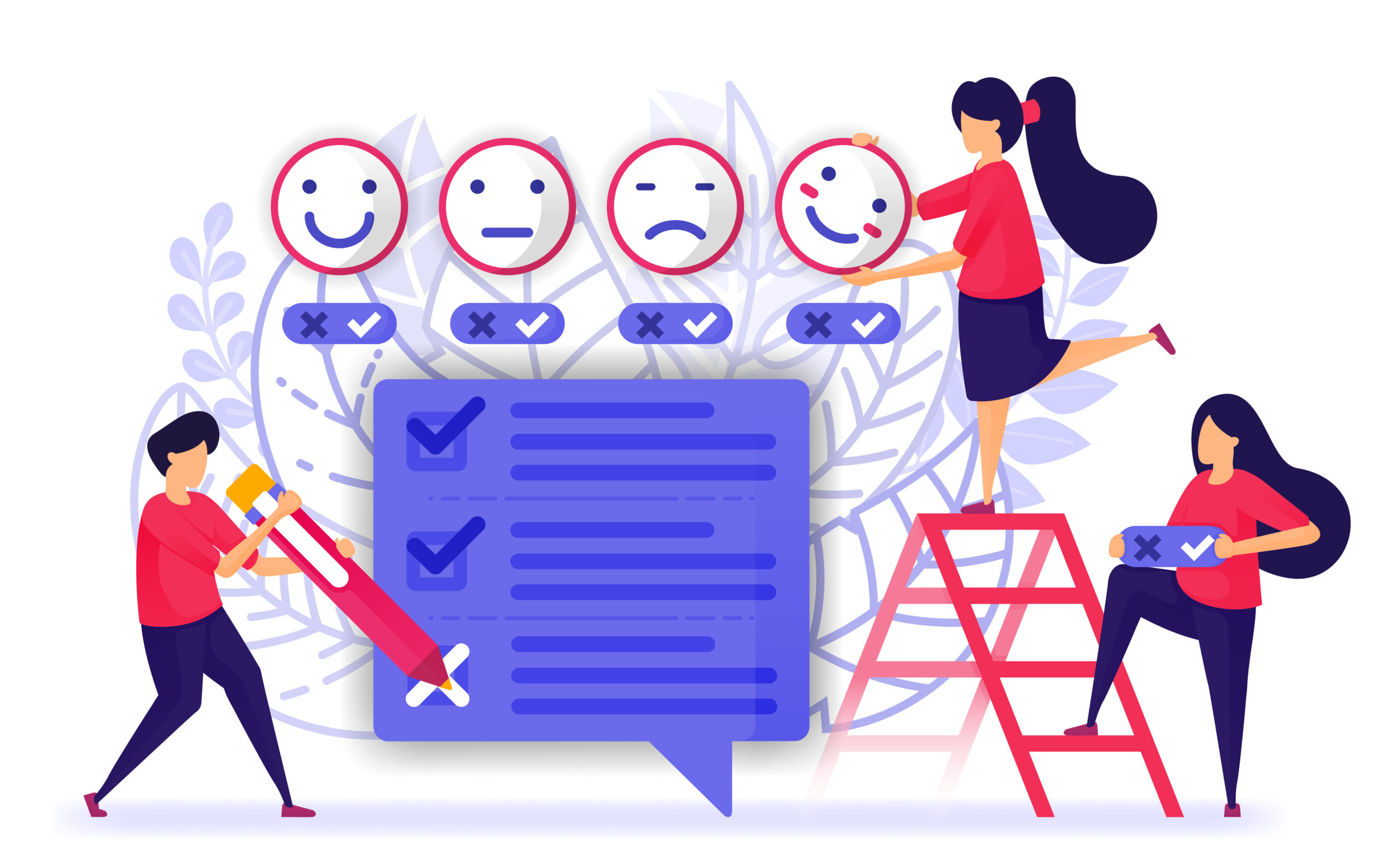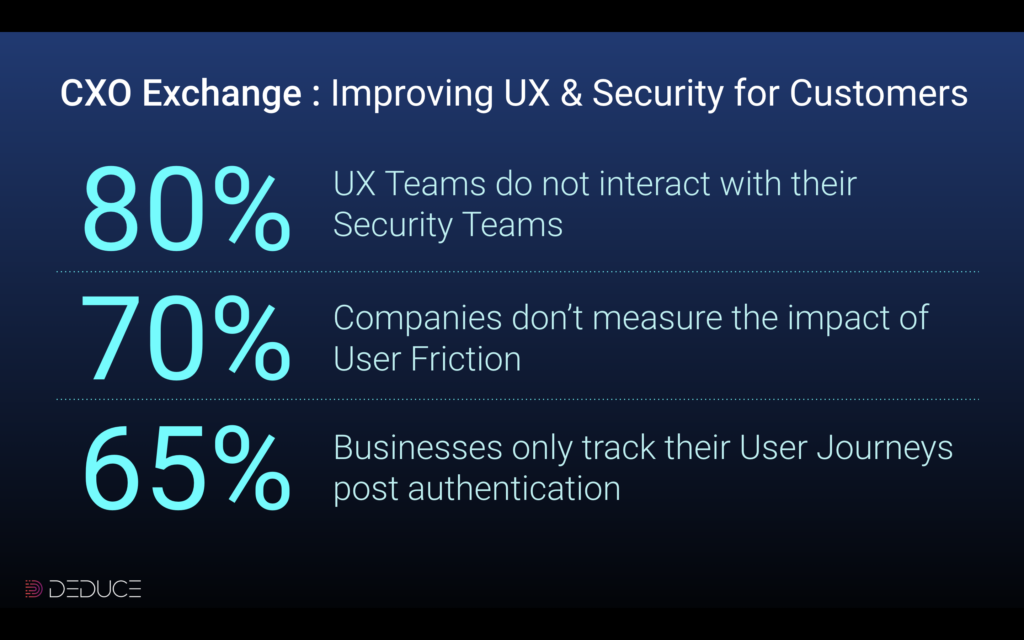The UXtraordinary Experience — Part One: Developing OKRs
OKRs align teams that are critical to customer success

OKRs align teams that are critical to customer success
At a recent CXO conference, we had the opportunity to poll top marketing and user experience leaders with a series of questions about their biggest challenges with user friction and security. Our questions uncovered some interesting results and concluded that most organizations do not have effective OKRs (Objectives and Key Results) and measurement frameworks to identify, track and reduce friction caused by security for new customers in the areas of account creation and first-time purchases.
One of the most significant poll results found that 80% of leaders stated there was “little to no” interaction between their UX and security teams. Separately, 70% did not measure the business impact of user friction on the experience, and 65% only tracked users after they had logged in.

As an executive leader in the Design and Product development space, I can attest to the challenges that many organizations face, no matter their size. In today’s digital world, organizations are moving fast and focused heavily on actions to get their launch, iterate and evolve their products quickly. As a result, many do not take the time to establish a set of clear OKRs and scorecards to evaluate customer impact on their acquisition and business during launch and following their product release to market.
OKRs have become widely adopted by many of the largest companies in the world including Google, Netflix, IBM, Microsoft and Amazon, to achieve ambitious goals for the organization, teams and individuals. OKRs are effectively divided into two parts that align objectives with measurable outcomes.
- Objectives should define what you want to achieve. They should be clear and concrete, action-oriented and challenging to ensure that everyone is aligned.
- Key Results should express how the objectives will be achieved by the organization, team, or individual to create a measurable outcome that is time-bound and challenging.
Now you may be asking yourself, how are OKRs different from KPIs (Key Performance Indicators)? Simply put, OKRs help to establish and set measurable goals for performance and a defined set of actions that lead to outcomes that can scale more broadly and effectively across the entire organization. KPIs are generally a set of metrics used to assess the performance of ongoing activities, features and processes. When developing company-wide organizational OKRs it is important to remain inspirational at a high level in order to define key priorities for the organization. In doing so, it allows managers and team members to set their own OKRs that best align with the company’s objectives and creates both flexibility and autonomy through transparency and accountability.
So, how can you create shared OKRs to measure the impact of security friction on your customers and business? It starts with the UX and Security teams working together with a cross-functional group of product, engineering, marketing and business leaders to identify areas within the journeys that can be improved or eliminated. Every company is different in how it will score and measure friction through qualitative and quantitative methods; however, what is most important is gaining alignment between teams that are critical to the customer experience through a set of shared OKRs.
Here are two examples that will help with context and guidance for you and your teams when creating corporate and cross-functional team alignment.
Example 1: A new fintech company that focuses on wellness apparel, equipment and content is launching a new product that includes retail and subscription services.
Objective (O): Launch a new minimum lovable product for web and mobile users.
- KR1: Get 250,000 new account subscribers in the first year.
- KR2: Get 25% of first time users to make a purchase within 7 days of account creation.
- KR3: Maintain an App Store rating of > 4.5 stars.
Example 2: An online retail company wants to increase monthly subscriptions that convert into higher transactions and return-users as they shift primarily to online digital versus traditional.
Objective (O): Achieve greater scale by increasing new subscription accounts.
- KR1: Gain >50,000 new subscribers per month.
- KR2: Increase first time purchases by 20% per month.
- KR3: Achieve a Net Promoter Score (NPS) of >65%
In order to be successful in this rapidly changing world where customers are at the heart and soul of your company’s success, it’s important to ensure alignment, consistency and transparency through cross-functional company collaboration and goals. When you’re ready to implement OKRs, these three keys will help create positive results for your customers and business.
- Encourage teams to work together to create a customer-centered approach.
- Define a set of company-wide OKRs, scorecards and measurements for success.
- Ensure collaboration, communication and transparency to prioritize customer needs.
Having the confidence and intelligence to better understand your first-time customers before they reach your site or application, and super-serve your returning customer needs, yields two significant outcomes. Not only does it build trust in your brand, but also creates a more meaningful user experience that lowers acquisition costs while increasing customer satisfaction (CSAT) and lifetime value (LTV).
Ready for some more UX nuggets? Check out Part Two of The UXtraordinary Experience: “Measure What Matters.”




